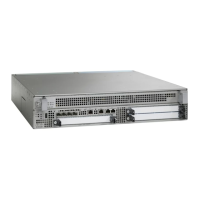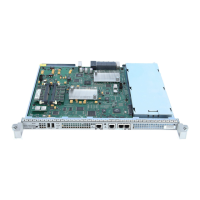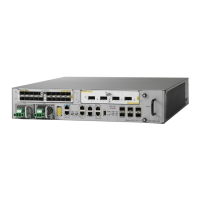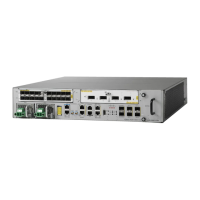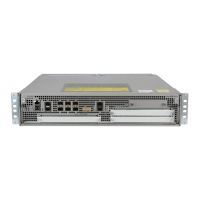7-2
Cisco ASR 1000 Series Aggregation Services Routers SIP and SPA Hardware Installation Guide
OL-14126-12
Chapter 7 Troubleshooting the Installation
Troubleshooting the Hardware
SIP is Deactivated
Table 7-1 describes the possible problems and solutions for a deactivated SIP.
Table 7-1 Possible Problems and Solutions for a Deactivated SIP
SIP Is Deactivated
Possible Problem Observations and Comments Solutions
SPA is not fully seated in the
SIP
Output of the show diag slot
command
SPA STATUS LED is off
Follow this procedure:
1. Remove the SPA from the SIP.
2. Inspect the SIP and the SPA. Verify there are no bent
pins or parts and that there is nothing lodged in the two
devices that could prevent a good connection.
3. Insert the SPA in the SIP by sliding the SPA all the way
into the SIP until the SPA is firmly seated in the SPA
interface connector. When fully seated in the SIP, the
SPA might be slightly behind the SIP faceplate.
SPA DSP is out of service
Output of the show hw-module
subslot all oir command
indicates ‘out of service’ as
Operational state for a SPA-DSP.
SPA STATUS LED is off
Refer Table 7-3 for solutions and details regarding the
hardware-based out-of-service states.
SPA is not supported on the
SIP
Error message indicating the
SPA is not supported
Output of the show diag slot
command
SIP STATUS LED is off
Install a SPA supported on the SIP.
SPA is not at the minimum
hardware revision level
Error message indicating the
SPA is not at the minimum
FPGA revision level
Output of the show hw-module
subslot fpd command
Output of the show diag slot
command
SPA STATUS LED is off
Follow the FPD upgrade process to update the FPGA.
For more information about performing FPD upgrades,
refer to the “Upgrading Field-Programmable Devices”
chapter in the Cisco ASR 1000 Series Aggregation Services
Routers SIP and SPA Software Configuration Guide.
SPA is misconfigured Refer to the configuration section of the SPA installation
and configuration guide. Also, refer to the Cisco IOS
software configuration documentation listed in the
“Related Documentation” section on page xiii.
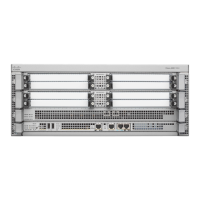
